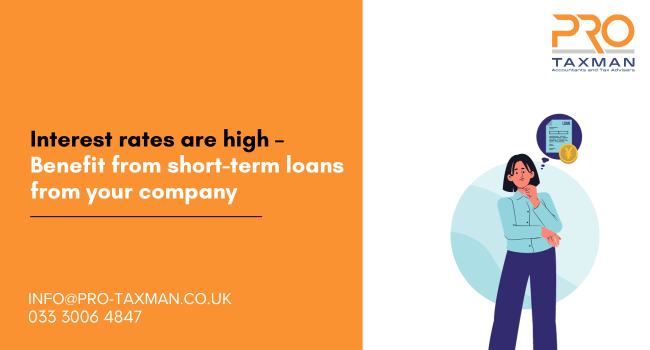The Bank of England has warned businesses and households that the cost of borrowing will remain high for at least the next two years and although taking out a bank loan is cheaper than a credit card, the interest rate on unsecured loans is at an all-time high of 5.7%. However, there is a source of finance from which a director or participator of a private limited company can borrow at 0% interest and that is from their company. As ever, there are restrictions but such a source of finance is worth considering. Such loans can have a relatively low annual tax cost and be useful (assuming the company has the money available).
A loan from the company may be a formal arrangement under which the company provides the funds and is repaid by a certain date, possibly with interest, or it may be a payment of salary in advance. Where the loan exceeds £10,000, is interest-free or at a low rate below HMRC’s ‘official rate’ (currently 2.25%) the director or employee is generally taxable on the difference between the interest charged and the ‘official rate’, such loans being termed ‘beneficial loans’. Even if the ‘official rate’ is charged, it would still be cheaper to borrow from the company at that percentage rather than a bank or credit card. The amount is declared to HMRC and confirmed to the director by 6 July after the tax year using a P11D Expenses and Benefits submission; NIC is also charged on the employer.
Borrowing from the company may not be beneficial if the loan is not repaid within nine months and one day after the company’s accounting year end. If the loan remains unpaid at that date, the company is liable for an additional tax charge (referred to as the ‘s455 charge) equal to that payable on a dividend of the same amount taxed at the dividend upper rate (currently 33.75%). Without this charge the director could borrow money from the company indefinitely without any tax implications. Should the loan not be repaid and the charge paid, when the loan is subsequently repaid (or written off), the tax payment is refunded, usually via offset from the corporation tax bill due nine months and one day after the accounting year end in which the loan is repaid. If the loan is written off the company cannot claim a tax deduction for the write-off and consequently the shareholder will be taxed on the amount written off at their marginal dividend rate.
This means that should the director or participator be a basic rate taxpayer and the loan not repaid in time; it would be cheaper for the loan to be taxed as a dividend at 8.75% rather than the company pay the 33.75% charge. Conversely, should the director be a higher rate taxpayer, it would be cheaper for the company to suffer the s455 charge as this would ultimately be repayable on repayment/write-off of the loan. Even when the s455 charge does have to be paid, the shareholder can still end up with more initial funds through taking a loan than taking additional salary or dividends. After all, the director would have had the benefit of an interest free loan in the meantime.
If timed effectively, it could be possible for a director of a company whose year end is, say, 30 September 2024 to take a loan from the company on 1 October 2023, and so long as the loan is repaid by 1 July 2025 (nine months and one day after the company’s year end) no s455 charge will be payable.
Practical point
Under the Companies Act 2006, a loan over £10,000 usually requires shareholders’ approval. The passing of a resolution will also serve to record the date on which the loan is made.
Need professional accounting service or accounting advice? Contact us to book a 15-min Free Consultation with us today.
To find out more please follow us on Facebook, Twitter, or LinkedIn. Feel free to contact us on 0333 006 4847 or request a call back by texting 075 6464 7474

